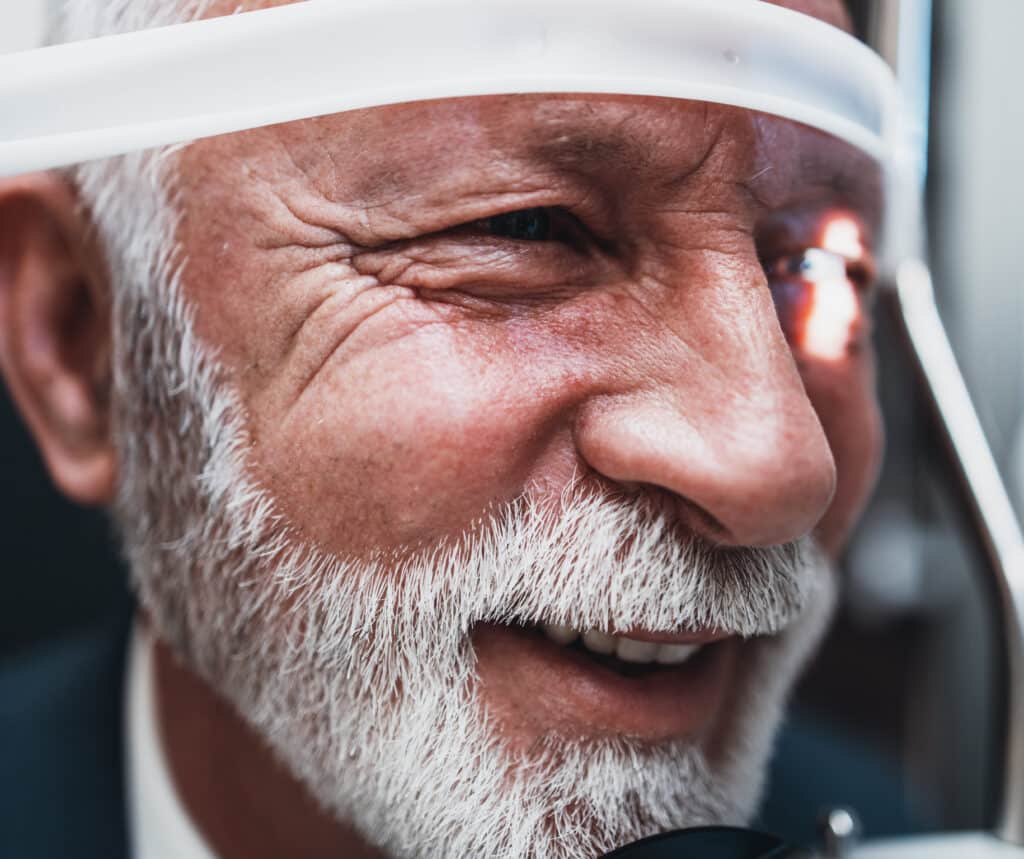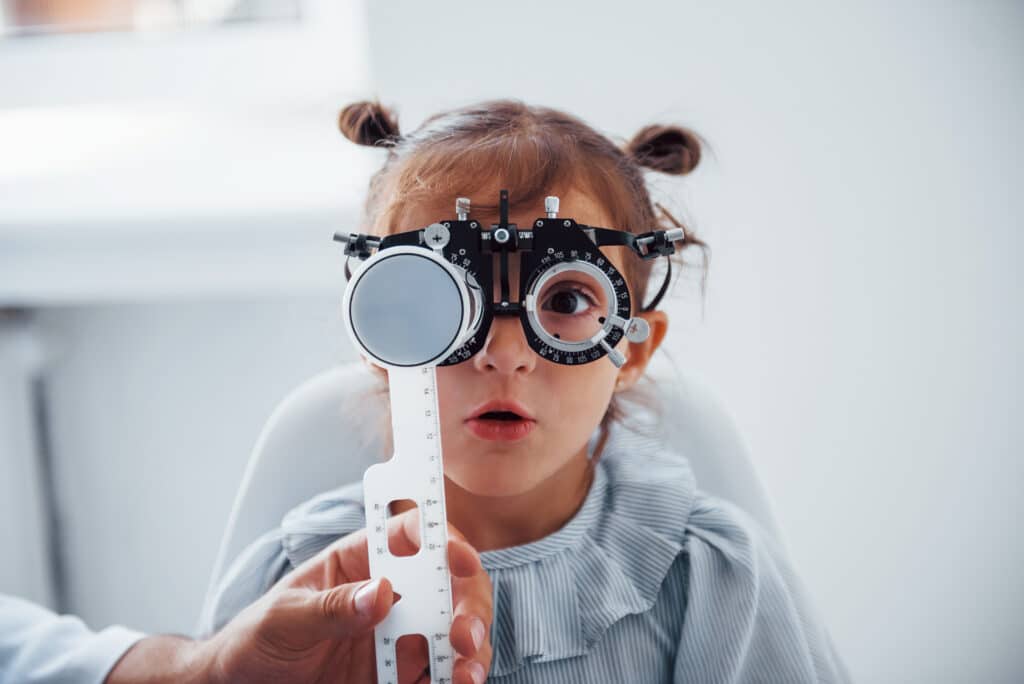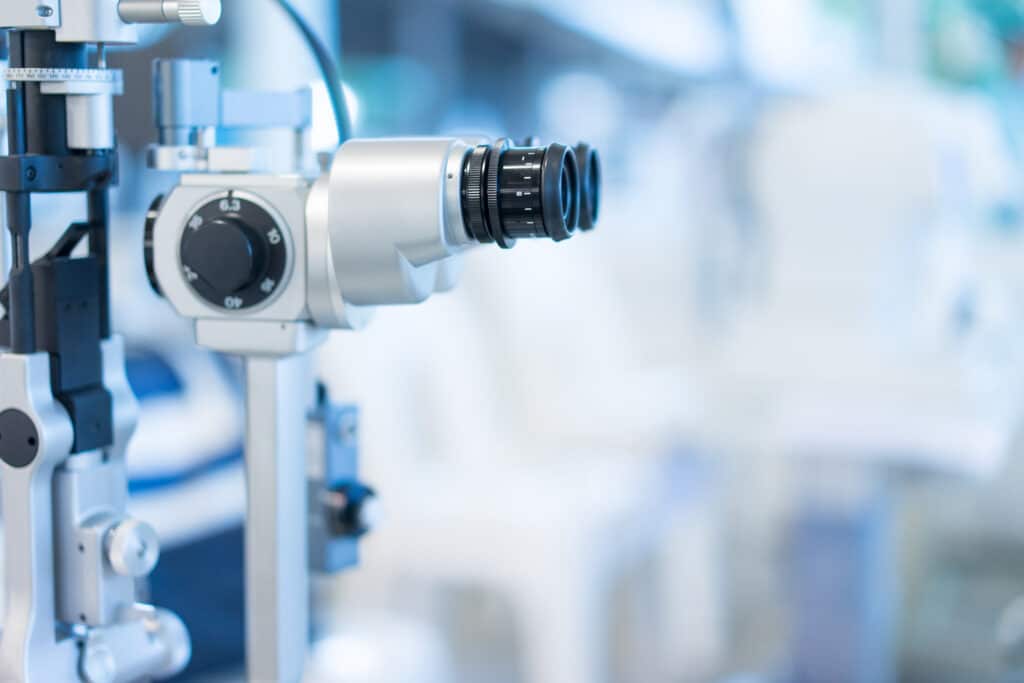Quinn & Co. Eyecare
There’s more to healthy eyes than having 20/20 vision. We provide comprehensive eye health assessments as well as vision tests.
Going to the optometrist isn’t just important if you think you need glasses to correct your vision – it’s also about assessing and protecting your eye health.




What makes us different?
Even if you don’t think you have a vision problem, you should still have regular eye check-ups. It’s especially important to have your eye health assessed if you have a family history of eye problems, chronic health conditions like diabetes or you are on certain medications that can affect your vision. Think of it like going to the dentist. Detecting problems early, and treating them properly, will save you and your family a great deal of stress, pain, worry, and of course, money in the long run.
Good vision is essential for your everyday wellbeing. Seeing well enables you to learn, work, and have fun doing what you love. Too often, people compromise lifestyle to account for poor vision.
As your trusted eyecare professionals, we will strive to improve your eye health through the provision of comprehensive eye examinations, and help you to achieve optimised vision that is:
Protected: from the sun’s harmful UV and blue light exposure when using digital devices
Sharp: even in low lighting conditions, so you can enjoy a range of activities with more ease.
Clear: by reducing annoying reflections and glare and in turn creating a more attractive look.
Comfortable: by eliminating eyestrain and poor posture through appropriate lens choice.
At Quinn & Co. Eyecare, we have a strong clinical focus, which means we invest in advanced diagnostic equipment, and our appointments are 30-40 minutes to ensure you and your eyes are getting the attention they deserve.
During the refraction process, the optometrist will place an instrument called a phoropter in front of your eyes, or use a trial frame, to show you various lens choices whilst you look at the eye chart. The optometrist will confirm how long or short-sighted you are and fine-tune your glasses prescription.
The optometrist may use an auto-refractor to obtain an objective measurement of how long or short-sighted you are and an initial prescription for glasses or contact lenses.
The optometrist uses a binocular microscope called a "slit lamp" to examine the health of your eyes. It allows them to look at the front of your eyes under high magnification. These structures include your eyelids, tear film, cornea and lens. The slit lamp examination can detect a number of conditions such as cataracts, corneal ulcers and pterygiums. The optometrist will also use the slit lamp together with a hand-held lens to examine the back of the eye. This allows them a detailed view of structures such as the optic disc, macula and retinal blood vessels.
Based on their findings, the optometrist will be able to advise you on the health of your eyes.
As part of checking your eye health, tonometry is done to measure the pressure in your eyes. This can help with assessing your risk for glaucoma. It is a quick test and can sometimes involve numbing eye drops depending on which tonometry test is used.
Sometimes it is necessary to use drops to dilate your pupils to allow a wider view of the back of the eyes. This can assist with diagnosing eye conditions such as diabetic retinopathy, age-related macular degeneration and retinal detachment. Your vision may be temporarily blurry for a short period of time after the eye test and we recommend that you arrange a driver to bring you to the appointment and also a pair of sunglasses to wear afterwards whilst your pupils are still dilated to assist with glare. The optometrist will always inform you prior to doing this test.
Using a retinal camera, the optometrist will take a high definition photo of the back of the eye - this tissue is known as the "retina". The image will show important structures such as the optic disc, macula and retinal blood vessels. Retinal photography can assist in the detection of serious eye conditions such as glaucoma, macular degeneration and diabetic retinopathy. Retinal photography is done in addition to traditional examination techniques as it gives the optometrist a detailed digital view of the retina, which can be saved to your file and images can be used for comparison in the future to identify structural changes.
Ocular Coherence Tomography (OCT) is another non-invasive imaging test performed by the optometrist to analyse the distinct layers of your retina. By mapping and measuring the thickness of each layer, the optometrist is better able to diagnose retinal diseases such as age-related macular degeneration (AMD), glaucoma and diabetic macular oedema. Scans can be saved to your file and compared with future scans to help with monitoring any changes in your eye health.
Visual field testing is carried out to assess your peripheral vision. A number of things can cause peripheral vision loss including glaucoma, detached retinas and stroke. The optometrist is able to recognise patterns in your visual field results that could indicate certain types of eye diseases. Sometimes it is necessary to repeat visual field tests to identify any changes to your peripheral vision.
It’s important to be aware that reduced peripheral vision can affect your ability to drive safely and some people may be required to complete a visual field test to ensure they meet the legal requirements to maintain a valid driver’s licence.
If you suspect you have lost peripheral vision, you should book a comprehensive eye examination with your optometrist.
A standard eye examination does not usually include a contact lens fitting, therefore, if you are interested in trying contact lenses for the first time, you will require a subsequent contact lens appointment. During your contact lens assessment, the optometrist will determine your suitability for contact lens wear and find contact lenses that are the right fit and prescription for your eyes. This will then be followed by a thorough contact lens teach to ensure you are comfortable with handling your contact lenses and know how to look after them.
A child's eye test can be quite different from an adult's. Besides ensuring your child has clear distance vision, the optometrist is checking for equal vision in both eyes, good near focusing and that the eye muscles are working together.
Regular eye tests for children are important as the optometrist may pick up an eye problem that your child can't describe or aren't aware of. Children should have an eye test before they start school, however, if parents suspect a problem earlier on, the optometrist can examine children as young as babies. As a parent, if you have concerns about your child's vision or eye health, you should book them in for a comprehensive eye examination.
Affects your ability to focus on objects close to you.
Affects your ability to see clearly in the distance. Myopia increases your chances of developing more serious eye conditions in the future. Managing it effectively, especially in children, is important for long-term eye health.
Is when there is gradual damage to the optic nerve, which is what connects the eye to the brain. This is often (but not always) associated with high eye pressure. Glaucoma damage is irreversible and often people are not symptomatic until significant damage has happened. Regular eye exams are important to detect glaucoma early so that treatment can be initiated to slow down the progression and minimise impact on vision.
Can affect your vision at all distances and is caused by an irregularly shaped cornea (or lens). It can often occur alongside hyperopia or myopia.
Causes progressive painless loss of central vision. It’s a disease that affects your macula, which is at the centre of the back of your eye. AMD is more common in people over 50 years old and is a leading cause of blindness in Australia. There is currently no cure but regular eye tests can detect changes and your optometrist can discuss how to reduce your risks for developing AMD.
Is the progressive thinning and bulging of the cornea. This can cause blurred or distorted vision.
Are growths on the conjunctiva that may affect one or both eyes and is associated with regular exposure to UV rays and dry dusty environments
Is a complication of diabetes which results in damaged retinal blood vessels. If severe, it can be sight threatening. It’s advised that people with diabetes have regular eye examinations where the optometrist can grade the retinopathy and write a report to your general practitioner.
Is when the eyes gradually lose the ability to focus up close. It happens as a result of your lens becoming less flexible. It’s a natural process that starts to occur from your early to mid-40s. Presbyopia can be corrected with glasses that help with reading.
The reduced ability to distinguish between different colours.
Can be due to inadequate amounts of tears or poor tear film quality. It’s a chronic condition that’s more common as you get older. Symptoms can include grittiness, redness, stinging or burning.
Assessment and removal of small particles on the front surface of the eye due to activities like grinding/welding.
If you have an eye emergency like this, contact your nearest Quinn & Co. Optometrist and we will prioritise you.
Ararat, Echuca, Horsham, Kew, Mildura CBD, Mildura Plaza, Stawell and Swan Hill.
Ararat, Echuca, Horsham, Kew,
Mildura CBD, Mildura Plaza,
Stawell and Swan Hill.
Quinn & Co. Eyecare is a team of optometrists and eyewear experts across Victoria that supports people who want next-level vision care and eyewear solutions.